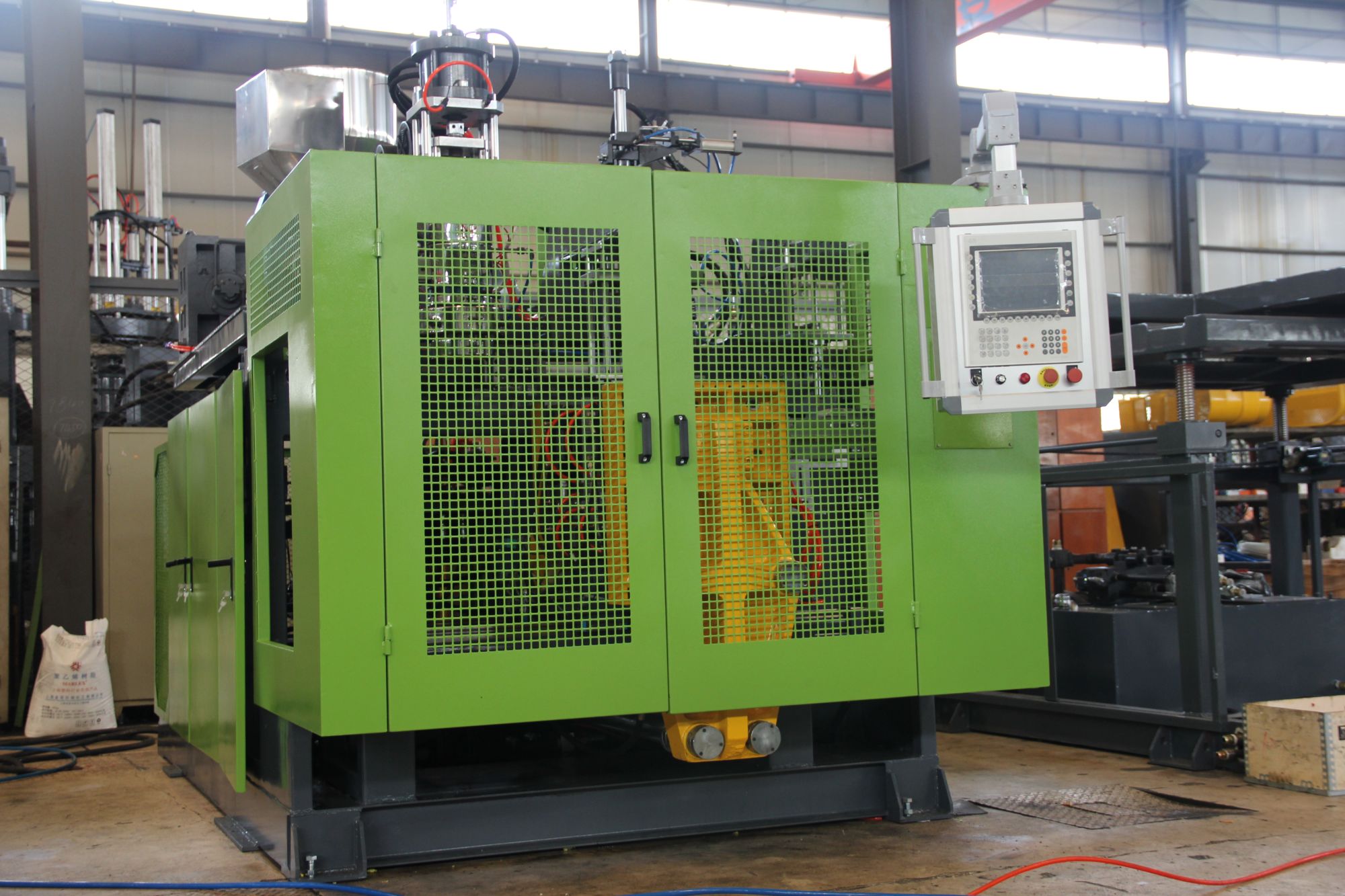Five details about China extrusion blow molding machine

Extrusion blow molding machine made by Kingplas, one of China extrusion blow molding machine factories is fully automatic computer control, equipped with precise integrated PID temperature control system, real-time detection of each screw extrusion pressure, can realize centralized control, interlock protection and alarm function, with automatic deflashing function, and optional 100 Point wall thickness control system.
The three layers of the composite bottle are: outer layer HDPE, middle layer adhesive, inner layer EVOH (barrier layer), and the hollow blow molding machine minimizes the thickness of the small middle layer (0.03mm) by precise control without affecting the barrier properties of the product. -0.05mm), which greatly reduces the cost of the composite bottle, currently at a level close to the glass bottle. The composite bottle itself has the advantages of light weight and not easy to be broken, so it can be an ideal substitute for glass bottles and has broad market prospects.
When operating a extrusion blow molding machine, you must pay attention to some temperature control to ensure that a suitable plastic bottle is manufactured.
(1) Melting temperature TM: For a crystalline polymer, the temperature at which a three-dimensional remote ordered state of a macro molecular chain structure is transformed into a disordered viscous state, also referred to as a melting point. It is the lower limit of the processing temperature of the crystalline polymer molding.
(2) Glass transition temperature TG: refers to a transition temperature of an amorphous polymer (including an amorphous portion in a crystalline polymer) from a glassy state to a high elastic state or by the latter. It is the lowest temperature for the free movement of the macromolecular segment of the amorphous polymer, and is also the upper limit of the working temperature of the product. >Aluminum plate spot welding machine
(3) No-flow temperature: The highest temperature at which no flow occurs under a certain pressure. It is to add a certain amount of plastic to the barrel at the upper end of the capillary rheometer die, and heat it to a certain temperature. After the temperature is known, the new 10MIN is applied, and a constant pressure of 50MPA is applied. If the material does not flow out of the die, the material temperature will be released after the pressure is released. The difficulty is increased by 10 degrees, and a constant pressure of the same magnitude is applied after the temperature is kept for 10 minutes, and so on until the melt flows out of the die, and the temperature is reduced by 10 degrees, which is the non-flowing temperature of the material.
(4) Flow temperature TF: refers to the temperature at which the amorphous polymer changes from a highly elastic state to a viscous flow state. It is the lower limit of the processing temperature of amorphous plastic.
(5) Decomposition temperature TD: refers to the polymer in the viscous flow state, when the temperature is further increased, the degradation of the molecular chain is intensified, and the temperature at which the polymer molecular chain is significantly degraded is the decomposition temperature.